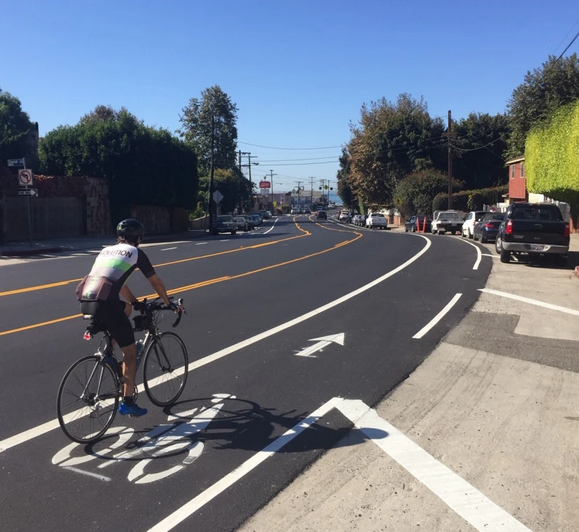Now that President Biden has signed the long-fought-over, $2T infrastructure investment package, people are pulling it apart to understand its shortcomings - and its benefits.
Laura McCamy, writing for the California Bicycle Coalition, took a close look at the bill's potential benefits to bike riders in California, and found some good stuff. Out of the total $1.2 trillion bill, $645 billion is for transportation nationwide. As has been pointed out elsewhere, much of that will go to roads and highways, but there is $39 billion for transit and rail.
In addition, there will be a much-needed, much-called-for increase of about sixty percent in funding for the Active Transportation Program, the main source of funding for bicycle and pedestrian facilities in California. The state has been receiving about $89 million annually from the federal government, which helps boost its total budget to about $220 million. This bill should increase the federal portion by another $53.4 million, for a total of about $270 million.
That, however, is nowhere near the $2 billion the California Transportation Commission has requested so it can fund more of the high-scoring projects that apply ATP funding.
While the bill includes a requirement for transportation planners to consider the needs of all road users, this kind of Complete Streets policy already exists in California. The Caltrans policy is not perfect - it contains wiggle room to get out of it, and will require attention from advocates to make sure it is effectively applied in projects, but at least these rules have existed for a few years. This change in the federal bill will mostly benefit other states.
There is other potential funding in the federal bill, including for the Connecting America’s Active Transportation System Act. This bill was passed by Congress in 2020 to "to build safe and connected options for bicycles and walkers within and between communities." The new infrastructure bill includes $200 million in competitive grants to get some of this built. California is probably in a good position to compete for some of this, but the total, for the entire country, doesn't add up to many projects.
Another pilot program, Reconnecting Communities, will get about $1 billion. This is a big shift - the program is looking for ways to provide reparations for damage caused by the legacy of freeway building that destroyed neighborhoods and displaced Black and low-income communities of color. But, writes McCamy: "as Smart Growth America pointed out, the $1 billion investment in freeway reparations is dwarfed by the bill’s $300 billion for building new freeways."
Another positive development is a change in standards for automobile safety, which have for years been focused on car occupants. Not everything in the bill is great - for example, it calls for developing wearable beacons for bicycle riders and pedestrians to let autonomous vehicles know where they are. This is at least consistent with prevailing notions that place the burden for safe driving behavior on people walking and biking.
But the bill does include a few positive changes, including a requirement that all new cars incorporate technology to prevent drunk driving, and better headlight standards. It also calls for new standards on crash tests, making them also assess dangers to people hit by cars, not just car occupants. Car manufacturers use these tests to rate the safety of their vehicles for potential buyers, so these rules won't prevent manufacturers from making and selling dangerous vehicles. But at least they have to test and report these potential safety issues, which they don't have to do now.
It will take public pressure to shut down the sales of dangerous cars, but at least now the public will can be armed with data. McCamy notes: "As bike advocates, we’ve learned to celebrate incremental progress and fight hard for more."
The fight continues.






